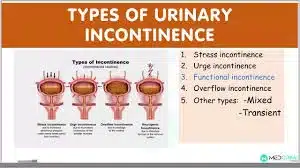Types of
Incontinence
and
Vital Treatments
Incontinence is a medical condition that affects millions of people worldwide. It is characterized by the inability to control the flow of urine or feces.
This can be a very embarrassing and distressing condition, but the good news is that there are many treatment options available.
In this blog post, we will discuss the different types of incontinence and the various treatments that can help manage the symptoms.
Types of Incontinence
1. Stress Incontinence
Stress incontinence is the most common type of incontinence, particularly in women. It is caused by physical stress on the bladder, such as coughing, sneezing, laughing, or lifting heavy objects. This stress weakens the pelvic muscles that support the bladder, resulting in urine leakage.
2. Urge Incontinence
Urge incontinence is also known as overactive bladder. This type of incontinence is characterized by a sudden urge to urinate that is difficult to control. People with urge incontinence may need to urinate frequently, and they may experience leakage before they can reach a bathroom.
3. Mixed Incontinence
Mixed incontinence is a combination of both stress and urge incontinence. People with mixed incontinence experience both types of symptoms.
4. Overflow Incontinence
Overflow incontinence occurs when the bladder is unable to empty completely. This can be caused by a blockage in the urethra or weak bladder muscles. People with overflow incontinence may experience a constant dribbling of urine.
5. Functional Incontinence
Functional incontinence is not caused by a physical problem with the bladder or urinary tract. Instead, it is caused by a physical or cognitive impairment that makes it difficult for a person to reach a bathroom in time.
Treatments for Incontinence
1. Behavioral Therapy
Behavioral therapy is the first-line treatment for incontinence. This includes pelvic floor exercises, also known as Kegels, which help to strengthen the muscles that support the bladder. Bladder training can also help people with urge incontinence to control their symptoms by gradually increasing the time between trips to the bathroom.
2. Medications
Several medications are available to treat incontinence, including anticholinergics, which help to relax the bladder muscle, and beta-3 agonists, which help to increase the capacity of the bladder.
3. Surgery
Surgery may be recommended for people with severe incontinence that does not respond to other treatments. Procedures may include the insertion of a sling to support the urethra, the implantation of an artificial sphincter, or the placement of a bladder pacemaker.
4. Lifestyle Changes
Lifestyle changes can also help to manage incontinence symptoms. These may include reducing caffeine and alcohol intake, maintaining a healthy weight, quitting smoking, and avoiding constipation.
Conclusion
Incontinence can be a distressing condition, but there are many treatment options available. Behavioral therapy, medication, surgery, and lifestyle changes can all help to manage the symptoms of incontinence. If you are experiencing incontinence, talk to your healthcare provider about which treatment options may be right for you. Remember, you are not alone, and with the right treatment, you can regain control of your bladder and live a full and active life.

